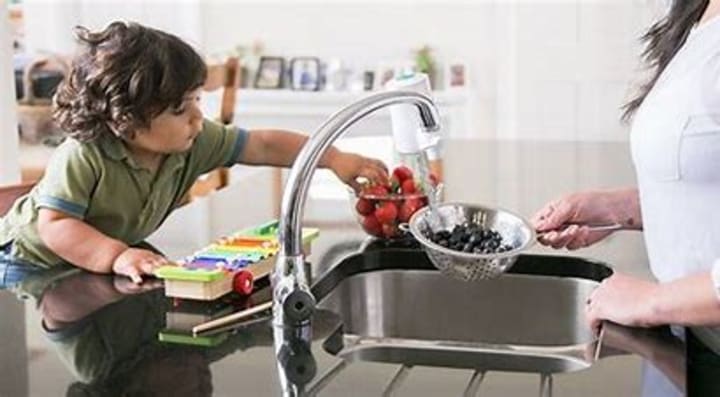The Pros and Cons of RO Water Filters
Reverse osmosis (RO) is one of the most effective water filtration methods available.

Reverse osmosis (RO) is one of the most effective water filtration methods available. A reverse osmosis water filter can remove hundreds more contaminants than most filters, resulting in clean, pure water.
But does its incredible contaminant removal make reverse osmosis an instant favorite? Not necessarily. Like most water filtration solutions, reverse osmosis has its disadvantages, and is better suited to some people than to others.
I’m this article, I’ll be sharing how a reverse osmosis water filter works, and the pros and cons of reverse osmosis technology as an at-home water treatment method.
Consider buying a reverse osmosis water purifier, do you? If so, we advise that you are aware of the advantages and disadvantages of the gadgets. Using this strategy, you can pick a healthier option to maintain your wellbeing. We will have a greater understanding of the fundamentals of these devices in this guide. The benefits and drawbacks of these units will next be discussed. Let's get going.
Are you thinking of purchasing a reverse osmosis water purifier? If so, we suggest that you understand the pros and cons of the devices. With this approach, you can choose a better alternative to stay healthy. In this guide, we are going to get a deeper insight into the basics of these devices. And then we will take a look at the pros and cons of these units. Let's get started.

What is Reverse Osmosis?
This method was initially developed to make seawater more palatable for everyday use. Moreover, these devices were created to purge tap water of heavy metals and other chemical pollutants.Originally, this technology was invented to improve seawater for regular consumption. Besides, these machines were designed to remove heavy metals and other chemical contaminants from tap water.
Basically, reverse osmosis refers to a process that filters your tap water and removes different types of dissolved minerals.Reverse osmosis, in its simplest form, is a procedure that purifies your tap water and eliminates various dissolved mineral types.
What can you remove using a Reverse Osmosis filter?
Reverse osmosis devices remove different types of contaminants from your tap water. Some common contaminants on this list include sodium, potassium, calcium, and magnesium. As a matter of fact, you can remove hundreds of these elements from plain water. And the good thing is that the efficiency rating of these units is 99%.
But these devices have their own set of limitations. For example, you cannot use them for removing chlorine or making your water soft. Therefore, these units come with activated carbon filters that can help remove more than 70 types of contaminants, such as Pharmaceuticals, chlorine bi-products, herbicides, and pesticides.
RO filters can help reduce the TDS level
With a TDS meter, you can measure the dissolved elements in your tap water. However, you cannot make your decision based on the TDS readings. If the TDS rating of your plain water is more than 150 PPM, it means that your tap water contains a lot of minerals. And this can be good news.
Do you need an RO Filter?
Over the past few years, reverse osmosis units have been quite popular among the masses. The fact of the matter is that these units are not useful for you unless you have had your tap water tested. In other words, you need to check the quality of your drinking water before purchasing these units.
Pros of RO Filters
These units are proven water filters that can help you purify your tap water
After filtration, your tap water will become free of heavy metals and bacteria
The filtered water will contain a higher amount of TDS
Cons of RO Filtration
These devices can waste a lot of water during the filtration process
Require a lot of maintenance for safety and effectiveness
Can remove minerals as well, such as bicarbonates, potassium, magnesium, and Calcium
These devices are more expensive to purchase
Conclusion
In short, reverse osmosis devices are absolutely amazing. They can help you convert seawater into filtered and purified water. You can also protect your health against water contaminants. Hopefully, these tips will help you understand the unit much more easily. And you will be able to purchase the best type of filter to satisfy your needs.
What can you take away?
About the Creator
gokul ganesh
Content writer passionate about creating engaging content. Eager to learn & help businesses achieve their goals through effective content marketing.






Comments
gokul ganesh is not accepting comments at the moment
Want to show your support? Send them a one-off tip.